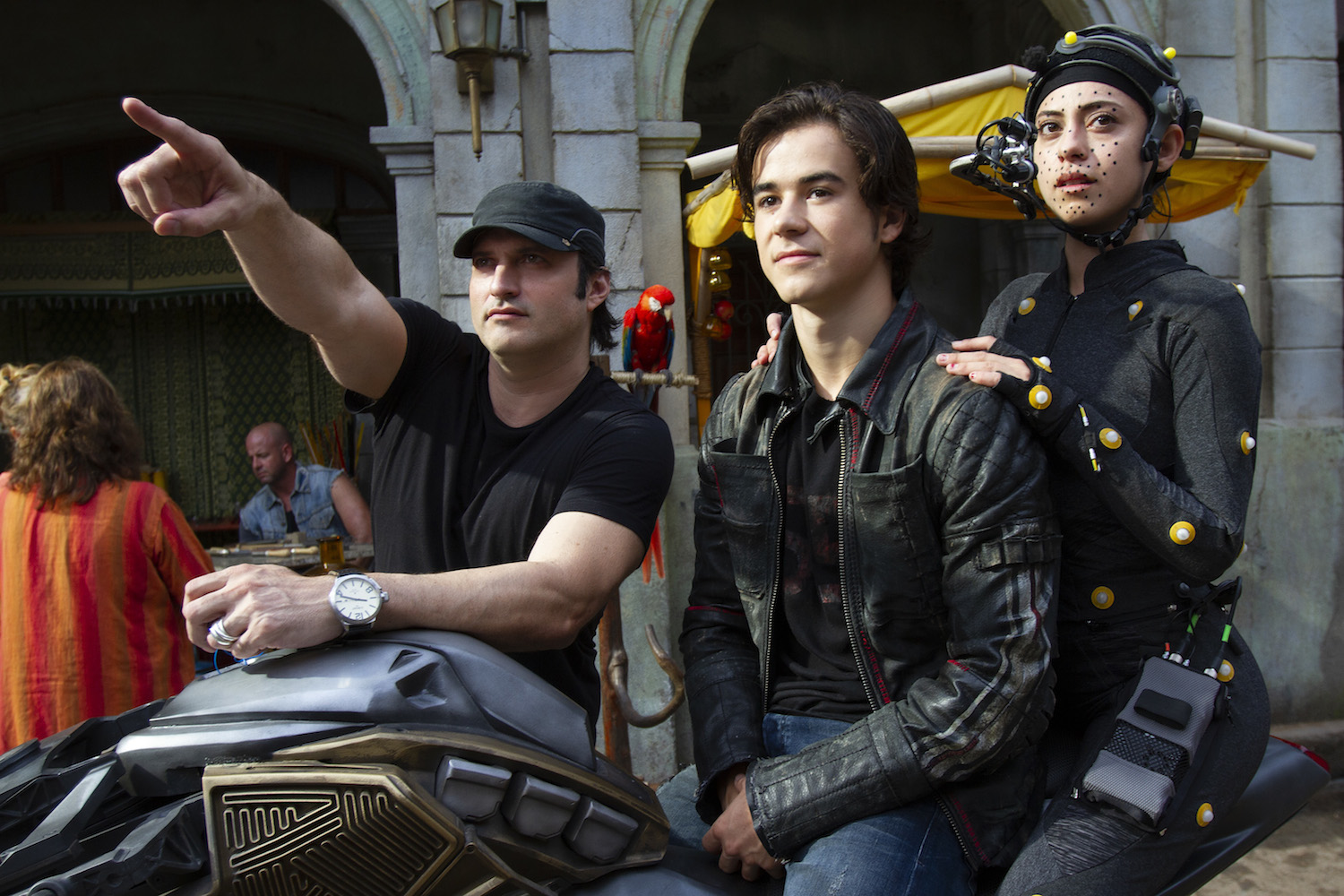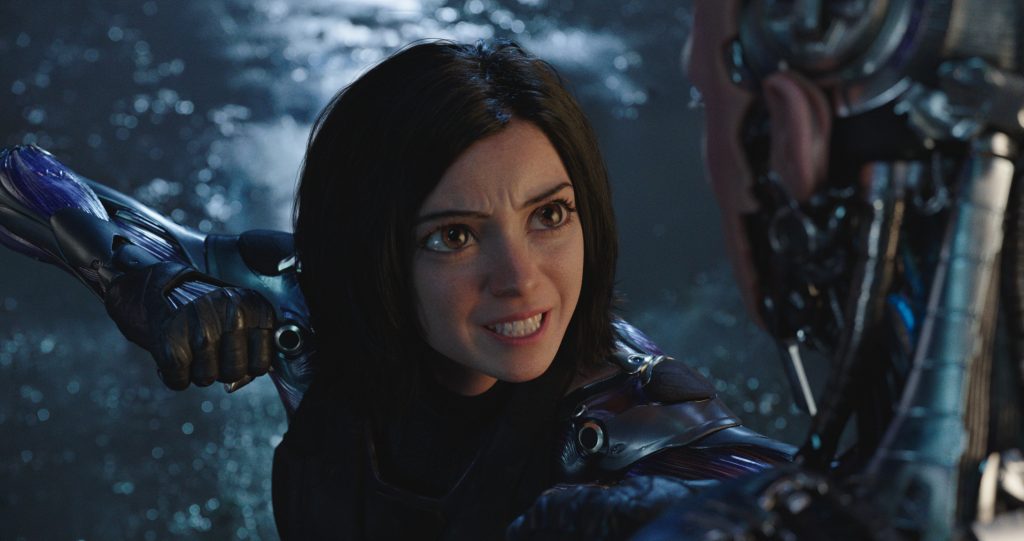By the time the closing credits roll and audiences are greeted with the title card of the film, it’s clear that Alita: Battle Angel is intended as the first installment in a series. It has the kind of an ending that promises more adventures for our titular hero, with enough plot strands left hanging to be explored later — including the reveal of a villain played by a famous A-lister that’s best left unspoiled. But clocking in at just over 2 hours this Robert Rodriguez manga adaptation strains to warrant any excitement moving forward. Executive produced and co-written by Avatar and Titanic director James Cameron, Alita: Battle Angel is a technical wonder but its exhaustive world-building and intricate storytelling bury much of what’s engaging about its source material, Yukito Kishiro’s manga series Gunnm (aka Battle Angel Alita).
As its title suggests, this cyberpunk film centers on Alita. Played by the ever-charming Rosa Salazar via performance-capture technology (meaning the manga-eyed young girl you see on screen is a CGI version of her own on-set acting, truly an amazing technical feat), Alita is a cyborg in a dystopian future who’s found in a scrapyard by Dr. Ido (Christoph Waltz). He reawakens her in a body he’d designed for his deceased daughter and gives her the name of that same daughter. Much of the film is about Alita slowly learning about her own history and her purpose in life, which gives Salazar plenty to work with as she goes from being a doe-eyed curious girl amazed by all around her — including oranges and chocolate — to a Matrix-like fighter intent on finishing a mission she was tasked with over 300 years ago.
The future Rodriguez and his crew have come up with is intentionally multicultural, borrowing elements from Blade Runner and Rogue One to create an urban environment somewhere in South America that feels like a mish-mash of various cultures coming together. There are old churches and bazaar-like stands. There are bilingual signs on the street and pissed off drivers yell out “Cabrón!” whenever someone crosses their path. As Ido explains to Alita, once “The Fall” happened and all the floating cities up above crumbled to the ground, everyone from around the world came to Iron City, a junkyard metropolis that sits below the only floating city left, Zalem. There’s a clear social message hinted at in this kind of setup, where the city up above is ruled by wealthy men, while minorities are stuck down below. The people Alita meets, like Hugo (Keean Johnson) and his friend Tanji (Dominican actor Jorge Lendeborg Jr. doing the best he can do with a bit part) scavenge to survive, stealing and sawing off cyborg parts to sell them off in the black market that feeds the high-tech, high-octane action sport Motorball that’s a kind of deadly roller-derby for robotically enhanced players.

If that’s all starting to sound too complicated, know that the film also stars Jennifer Connolly as Chiren, Ido’s ex-wife who now works alongside Mahershala Ali’s Vector, a shady entrepreneur who rigs Motorball matches and is intent on killing Alita at the behest of the mysterious Nova, who in turn may have something to do with her past. And that doesn’t even include the subplot about Hunter-Warriors (that’s where Eiza González‘s blink-and-you’ll-miss-her cyborg assassin comes in) and the underground bounty economy that fuels Iron City. Nor the romance that slowly blooms between Hugo and Alita. Nor the discovery of a new body that may make Alita even stronger.
It’s no surprise that Alita: Battle Angel, befitting its title, is best when it’s all punches and Motorballs. Alita, who we’re told has the face of an angel and a body for battle (yes, really), is a fighting machine. Whether taking on cyborgs on one-to-one combat or fending off Motorball assassins while rollerskating her way through a sleek track, she’s an exciting presence on screen. Like the best video game player you could ask for, able to high kick and swerve and crouch at always the right time. Rodriguez, here given the highest budget he’s ever worked with, lets his imagination soar, making bar brawls with swords and robo-dogs (guns are banned in Iron City) feel electric and turning that final Motorball sequence into a truly awe-inspiring spectacle. One wishes it were all more integrated and that Alita’s tale were able to rise above muddled storytelling and intermittently great action sequences. It all feels like too much setup, too much exposition, too much world-building. And all for what? A final shot that demands we wait for a sequel? Many may feel like they’ve already gotten enough as is.
Alita: Battle Angel is in theaters now.







